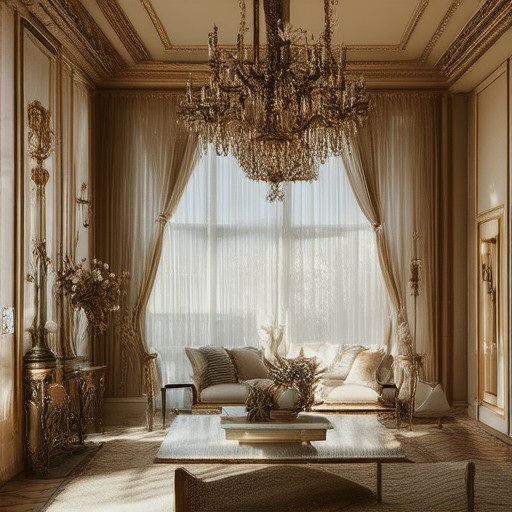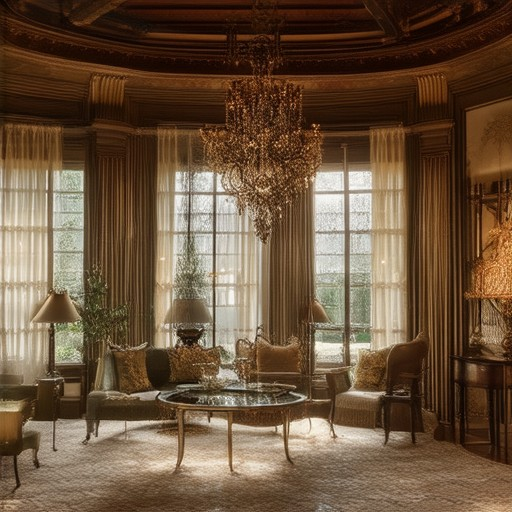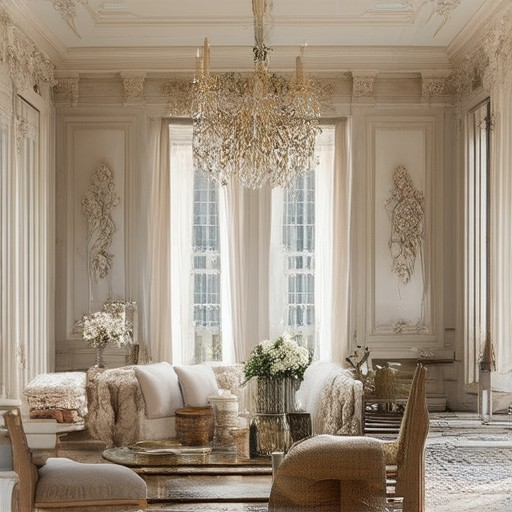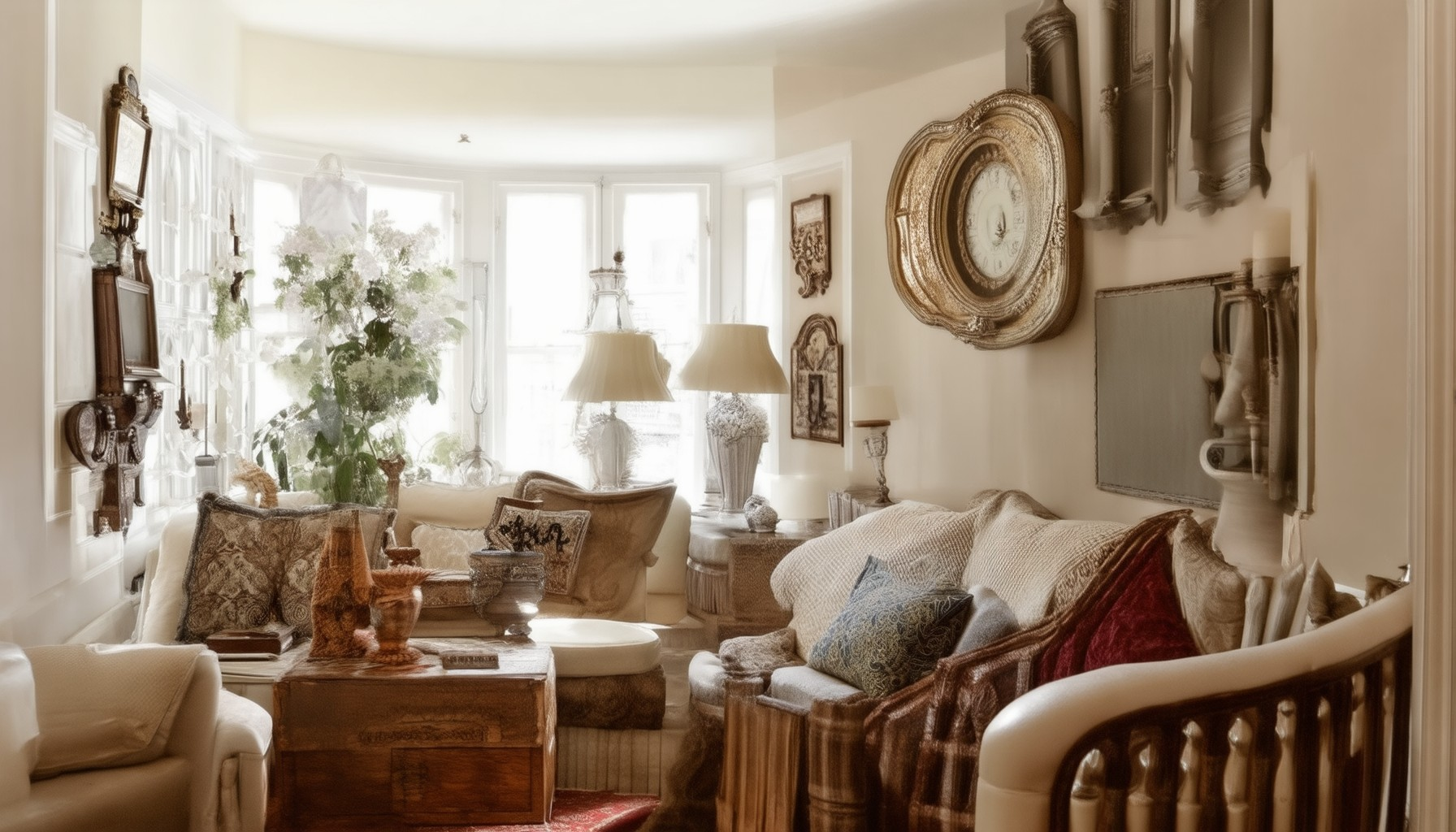Do people still decorate with antiques? The answer is a resounding yes, as antiques continue to be a beloved element in modern and traditional home designs alike. Whether you’re aiming for a sleek, minimalist look or a cozy, vintage vibe, incorporating antiques can add character, history, and uniqueness to your space. From blending old-world charm with contemporary aesthetics to creating a rustic or primitive ambiance, antiques offer endless possibilities for transforming your home into a timeless haven. This article delves into the art of decorating with antiques, exploring how to seamlessly integrate these pieces into your living spaces, modernize classic furniture, and discover creative ways to infuse vintage elements into every corner of your home. We’ll also address common questions, such as how to source authentic antiques, avoid over-restoring valuable pieces, and incorporate antiques into holiday and kitchen decor. Get ready to unlock the secrets of using antiques to create a distinctive and inviting environment that stands out.
Key Takeaways
– Avoid Harmful Cleaning Practices: Protect your antiques by steering clear of harsh chemicals and abrasive cleaners. Opt for gentle, pH-neutral solutions or natural cleansers like vinegar and water.
– Refrain from Overcleaning: Limit cleaning to prevent wear and tear on finishes and avoid frequent washing that can cause discoloration.
– Don’t Use Steam Cleaners: While effective for modern surfaces, steam can damage delicate finishes on antiques. Consider dry cleaning alternatives instead.
– Support Heavy Pieces Carefully: Always use dollies or straps when moving large antiques to prevent scratches or breaks.
– Protect from Heat: Shield antiques from excessive heat, as it can crack or dry out wooden components.
– Seek Professional Help for Repairs: Unauthorized fixes can worsen damages. Consult experts for restorations.
– Be Cautious with Water: Moisture can harm wood and metal, so wipe spills immediately and allow furniture to air dry.
– Mind Environmental Conditions: Keep antiques away from damp or poorly ventilated areas to prevent moisture damage.
- Painting Antiques Requires Thought: Consider wood type, condition, finish details, sentimental value, environmental impact, structural integrity, and color choices before deciding to paint.
- Explore Disposal Options: Donate, host a yard sale, list online, repurpose, landfill disposal, or hire junk removal services for efficient and eco-friendly removal of unwanted furniture.
This section encapsulates the essential tips and considerations for caring for, painting, and disposing of antiques, ensuring both practical advice and search-engine friendliness.

Do People Still Decorate with Antiques?
Yes, people still decorate their homes and interiors with antiques, and for good reason. Antiques offer a unique charm and storytelling aspect that modern, mass-produced items simply cannot match. Here’s why antiques remain a popular choice for decorating:
- Uniqueness and Character: Every antique carries its own history and story, making each piece one-of-a-kind. This uniqueness adds character and personality to a space, creating a distinctive ambiance.
- Vintage Vibes: Antiques often embody a timeless style that blends seamlessly with various design aesthetics, from classic to modern. They can easily complement both traditional and contemporary interiors.
- Patina and Wear: The signs of age on antiques, such as wear marks or weathered finishes, contribute to their appeal. These imperfections tell a story and add depth to a room’s decor.
- Environmental Responsibility: Many people appreciate the durability and craftsmanship of antiques, which are often made to last a lifetime. This makes them a sustainable choice compared to disposable furniture and decor.
- Conversation Starter: An antique piece is guaranteed to spark curiosity and conversation. Its historical background and distinct appearance make it a focal point in any room.
If you’re considering incorporating antiques into your home, start small with a few standout pieces that align with your personal style. For more inspiration, explore our guide on using antiques in home decoration .
How to Incorporate Antiques into Modern Decor
Incorporating antiques into modern decor can add a unique charm and history to your space while blending seamlessly with contemporary aesthetics. Here’s a step-by-step guide to successfully integrating antiques into your modern interior:
- Select Thoughtful Pieces:** Choose antiques that align with your room’s style and proportions. Look for items like mid-century modern furniture, vintage lighting, or decorative pieces that complement your existing decor.
- Consider Scale and Proportion:** Ensure the size of the antique fits the space. A large piece can act as a focal point, while smaller items can add detail without overpowering the room.
- Introduce Textural Contrast:** Antiques often bring unique textures, such as wood grain or metal accents. Pair these with smooth, contemporary surfaces to create visual interest and depth.
- Play with Color and Pattern:** Use the subtle colors and patterns found in antiques to add warmth to neutral spaces. Consider how they interact with your modern color palette or bold statement pieces.
- Think About Functionality:** Assess how the antique will function in its new setting. Ensure it serves a purpose, whether as seating, lighting, or decoration, while maintaining its aesthetic appeal.
- Lighting Solutions:** Use antique lighting fixtures, such as lamps or chandeliers, to add character. Opt for pieces that combine classic forms with modern bases or finishes for a balanced look.
- Customize Where Necessary:** Modify antiques to better suit your space. This could involve changing finishes, adding new hardware, or reupholstering furniture to match your modern style.
- Maintain Carefully:** Understand the maintenance requirements of your antique selections. Regular cleaning or professional restoration services may be necessary to preserve their condition over time.
By thoughtfully selecting and integrating antiques, you can create a space that feels both timeless and contemporary, celebrating the beauty of old-world craftsmanship while embracing modern design principles.

Understanding the 100-Year Rule for Antiques
The term “antique” typically refers to items that are at least 100 years old. This rule has become a common standard for determining whether an object qualifies as an antique. However, there are exceptions and variations depending on the type of item and cultural context.
Key Points About the 100-Year Rule:
- General Definition : Most definitions require an item to be at least 100 years old to be considered an antique. This rule applies broadly to various categories, including furniture, jewelry, and decorative objects.
- Exceptions :
- Motor Vehicles : One notable exception is the automotive industry, where some definitions allow cars to be considered antiques after just 25 years. This rule reflects the rapid evolution and short lifespan of many vehicle models.
- Condition and Provenance :
- An item may still be classified as an antique even if it does not meet the strict 100-year age requirement if it is rare, historically significant, or in its original, unaltered state.
- Provenance (the history of ownership) can also play a role in determining an item’s status as an antique, regardless of its age.
- Regional Variations :
- Different countries and cultures may have slightly different criteria for what constitutes an antique. For example, some regions may apply stricter age requirements, while others may be more flexible based on the item’s perceived value or historical significance.
Why the 100-Year Rule Matters:
The 100-year rule serves as a general guideline for collectors, dealers, and enthusiasts to identify items that may have historical, cultural, or financial value. While the rule provides a framework, it’s essential to consider the unique characteristics of each item when determining its classification.
By understanding these nuances, buyers and sellers can better navigate the world of antiques and make informed decisions based on age, rarity, and historical context.

What Should You Not Do with Antique Furniture?
- Avoid Harsh Chemicals and Abrasive Cleaners: Use mild, pH-neutral cleaning agents or natural cleaning solutions like vinegar and water mixtures. Harsh chemicals can damage the original finish or warp the wood.
- Refrain from Overcleaning: Frequent cleaning can wear down the surface finish and lead to discoloration over time. Clean only when necessary and use soft cloths or brushes.
- Steer Clear of Steam Cleaners: While effective for modern surfaces, steam can leave residue or damage delicate finishes on antique furniture. Consider dry cleaning methods instead.
- Don’t Move Heavy Pieces Without Proper Support: Antiques can be unstable and prone to scratching or breaking when moved. Always use dollies or straps to support large items during repositioning.
- Stay Away from High Heat: Excessive heat from sunlight or heating vents can crack or dry out wooden components. Take measures to protect furniture from prolonged exposure to high temperatures.
- Don’t Attempt Major Repairs Yourself: Professional knowledge and tools are often required for restoring antique furniture. Unauthorized repairs can lead to further damage or irreparable harm.
- Avoid Using Water Excessively: Moisture can penetrate wood and metal parts, leading to rusting or warping. Wipe spills immediately and allow the furniture to air dry naturally.
- Don’t Neglect Environmental Factors: Avoid placing antique furniture in damp or poorly ventilated areas. Prolonged exposure to moisture can compromise the integrity of the materials.
Is It a Bad Idea to Paint Antique Furniture?
Painting antique furniture can be a viable option, but it largely depends on several factors:
- Wood Type: Furniture made from common woods like oak or pine can safely be painted. Exotic woods such as cherry, mahogany, or satinwood may not be ideal due to their sensitivity.
- Condition of the Furniture: If the furniture shows signs of wear, painting can conceal imperfections. However, if it has significant damage like peeling or cracking, painting may not be the best solution.
- Finish and Details: Painting can obscure damage to finishes, but it may also hide valuable features like veneers or carvings. Consider whether you want to preserve these details.
- Historical or Sentimental Value: Antiques with sentimental value may lose their charm upon repainting. Evaluate the importance of preserving their original state.
- Environmental Impact: Removing old finishes can release harmful chemicals, but using eco-friendly paints can mitigate this issue.
- Structural Integrity: Solid pieces are generally safe to paint, but veneered or layered furniture may face issues like delamination after painting.
- Color Choice: Selecting the right color is crucial for both aesthetics and functionality—lighter colors may brighten rooms, while darker hues could highlight dust.
- Professional Advice: Consulting a furniture restoration expert can provide tailored recommendations based on your specific piece.
Ultimately, painting antique furniture is not inherently bad, but it requires careful consideration of the piece’s characteristics and your goals for its appearance and preservation.

How to Get Rid of an Antique Bedroom Set
We offer several effective methods to help you dispose of or repurpose an antique bedroom set:
- 1. Donate to Charity: Consider donating usable items to local charities or non-profits. Many organizations accept furniture to support community projects or provide aid to those in need.
- 2. Host a Yard Sale: Organize a neighborhood yard sale to sell the furniture directly to individuals interested in acquiring vintage pieces. This is a great way to declutter your home while connecting with potential buyers.
- 3. Online Marketplaces: List items on platforms like eBay, Craigslist, or Facebook Marketplace. These platforms allow you to reach a broader audience and potentially sell the furniture to collectors or enthusiasts.
- 4. Repurpose or Upcycle: If some pieces are still in good condition, consider repurposing them into new uses, such as converting a bed into a storage bench or transforming a dresser into a standalone vanity unit.
- 5. Landfill or Trash Disposal: If the furniture is beyond repair and cannot be sold or donated, schedule it for trash pickup or hire a waste removal service to handle disposal.
- 6. Local Junk Removal Services: Contact professional junk removal companies that specialize in handling large items like furniture. They can often provide faster and more reliable disposal services.
- 7. Community Freebies: Offer the furniture to neighbors or local communities through freebie platforms. Many people appreciate finding affordable decor or household items.
Conclusion: Whether you choose to donate, sell, repurpose, or dispose of the furniture, taking proactive steps to declutter your home while considering eco-friendly options is key. Plan accordingly and ensure responsible disposal methods are utilized for each piece.





0 Comments